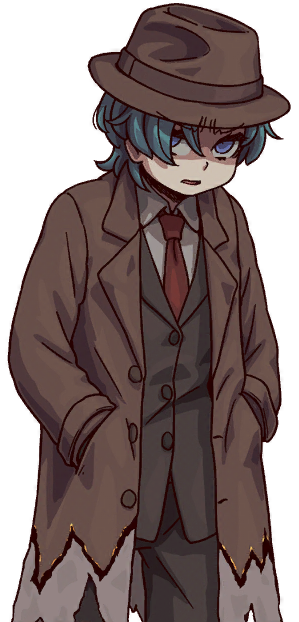#j edgar hoover
Text

Twelve days into the Korean War, on 7th July 1950, FBI director J. Edgar Hoover approached President Harry S. Truman with a list of 12,000 names.
These names (97% of which were American citizens) were of people that Hoover felt should be indefinitely arrested and placed in concentration internment camps due to his claims that the people named were necessary to “protect the country against treason, espionage and sabotage" in the event that America were to go to war against the Soviet Union.
The letter wherein he proposed these arrests stated that eventually the interned people would be allowed to have a hearing. The hearing board would have been a panel made up of one judge and two citizens. But the hearings “will not be bound by the rules of evidence,” his letter noted.
Who would have been these people that Hoover wished to detain? His usual suspects. People with socialist or communist beliefs or sympathies (real or manufactured), pacifists, early members of the civil rights movement such as the African-American singer and actor Paul Robeson...
Truman, to his credit, didn't agree with Hoover's suggestion and chose to veto it, although Congress reportedly would later vote to overturn his veto.
This was one of several documents declassified in the mid-2000s that underlined for as terrible as J. Edgar Hoover was, there were still even worse things he wanted to do that even Truman (who was brought on as FDR's vice president because the Democrats thought he'd make them look tougher on communism than Roosevelt's former VP, the socially progressive Henry Agard Wallace*) was against it.
*Wallace wanted to do things like ending segregation, bringing about gender and racial equality, and establishing a national health service (like the UK eventually adopted several years later), so OBVIOUSLY he had to go.
217 notes
·
View notes
Text

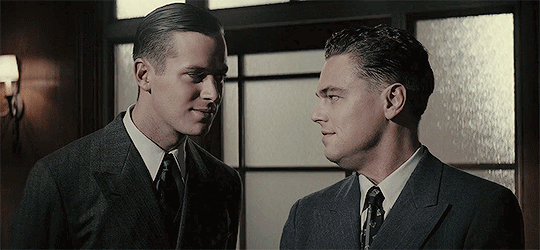
82 notes
·
View notes
Text
introductory excerpts on COINTELPRO
it came to my awareness that some folks don't know what COINTELPRO is still, so imma drop some excerpts from the wikipedia page. ofc there are a billion other resources you can check out, especially firsthand accounts, but this is always a good place to start! link attached below:
[Note that the embedded link above's photo has the following caption: "COINTELPRO memo proposing a plan to expose the pregnancy of actress Jean Seberg, a financial supporter of the Black Panther Party, hoping to "possibly cause her embarrassment or tarnish her image with the general public". Covert campaigns to publicly discredit activists and destroy their interpersonal relationships were a common tactic used by COINTELPRO agents."]
The Introduction:
COINTELPRO (syllabic abbreviation derived from Counter Intelligence Program; 1956–1971) was a series of covert and illegal[1][2] projects actively conducted by the United States Federal Bureau of Investigation (FBI) aimed at surveilling, infiltrating, discrediting, and disrupting domestic American political organizations.[3][4] FBI records show COINTELPRO resources targeted groups and individuals the FBI[5] deemed subversive,[6] including feminist organizations,[7][8] the Communist Party USA,[9] anti–Vietnam War organizers, activists of the civil rights and Black power movements (e.g. Martin Luther King Jr., the Nation of Islam, and the Black Panther Party), environmentalist and animal rights organizations, the American Indian Movement (AIM), Chicano and Mexican-American groups like the Brown Berets and the United Farm Workers, independence movements (including Puerto Rican independence groups such as the Young Lords and the Puerto Rican Socialist Party), a variety of organizations that were part of the broader New Left, and white supremacist groups such as the Ku Klux Klan[10][11] and the far-right group National States' Rights Party.[12]
Methods COINTELPRO Utilized
According to attorney Brian Glick in his book War at Home, the FBI used five main methods during COINTELPRO:
Infiltration: Agents and informers did not merely spy on political activists. Their main purpose was to discredit, disrupt and negatively redirect action. Their very presence served to undermine trust and scare off potential supporters. The FBI and police exploited this fear to smear genuine activists as agents.
Psychological warfare: The FBI and police used a myriad of "dirty tricks" to undermine movements. They planted false media stories and published bogus leaflets and other publications in the name of targeted groups. They forged correspondence, sent anonymous letters, and made anonymous telephone calls. They spread misinformation about meetings and events, set up pseudo movement groups run by government agents, and manipulated or strong-armed parents, employers, landlords, school officials, and others to cause trouble for activists. They used bad-jacketing to create suspicion about targeted activists, sometimes with lethal consequences.[74]
Harassment via the legal system: The FBI and police abused the legal system to harass dissidents and make them appear to be criminals. Officers of the law gave perjured testimony and presented fabricated evidence as a pretext for false arrests and wrongful imprisonment. They discriminatorily enforced tax laws and other government regulations and used conspicuous surveillance, "investigative" interviews, and grand jury subpoenas in an effort to intimidate activists and silence their supporters.[73][75]
Illegal force: The FBI conspired with local police departments to threaten dissidents; to conduct illegal break-ins in order to search dissident homes; and to commit vandalism, assaults, beatings and assassinations.[73] The objective was to frighten or eliminate dissidents and disrupt their movements.
Undermine public opinion: One of the primary ways the FBI targeted organizations was by challenging their reputations in the community and denying them a platform to gain legitimacy. Hoover specifically designed programs to block leaders from "spreading their philosophy publicly or through the communications media". Furthermore, the organization created and controlled negative media meant to undermine black power organizations. For instance, they oversaw the creation of "documentaries" skillfully edited to paint the Black Panther Party as aggressive, and false newspapers that spread misinformation about party members. The ability of the FBI to create distrust within and between revolutionary organizations tainted their public image and weakened chances at unity and public support.[49]
The FBI specifically developed tactics intended to heighten tension and hostility between various factions in the black power movement, for example between the Black Panthers and the US Organization. For instance, the FBI sent a fake letter to the US Organization exposing a supposed Black Panther plot to murder the head of the US Organization, Ron Karenga. They then intensified this by spreading falsely attributed cartoons in the black communities pitting the Black Panther Party against the US Organization.[49] This resulted in numerous deaths, among which were San Diego Black Panther Party members John Huggins, Bunchy Carter and Sylvester Bell.[73] Another example of the FBI's anonymous letter writing campaign is how they turned the Blackstone Rangers head, Jeff Fort, against former ally Fred Hampton, by stating that Hampton had a hit on Fort.[49] They also were instrumental in developing the rift between Black Panther Party leaders Eldridge Cleaver and Huey Newton, as executed through false letters inciting the two leaders of the Black Panther Party.[49]
...
In order to eliminate black militant leaders whom they considered dangerous, the FBI is believed to have worked with local police departments to target specific individuals,[78] accuse them of crimes they did not commit, suppress exculpatory evidence and falsely incarcerate them. Elmer "Geronimo" Pratt, a Black Panther Party leader, was incarcerated for 27 years before a California Superior Court vacated his murder conviction, ultimately freeing him. Appearing before the court, an FBI agent testified that he believed Pratt had been framed, because both the FBI and the Los Angeles Police Department knew he had not been in the area at the time the murder occurred.[79][80]
...
In 1969 the FBI special agent in San Francisco wrote Hoover that his investigation of the Black Panther Party had concluded that in his city, at least, the Panthers were primarily engaged in feeding breakfast to children. Hoover fired back a memo implying the agent's career goals would be directly affected by his supplying evidence to support Hoover's view that the Black Panther Party was "a violence-prone organization seeking to overthrow the Government by revolutionary means".[84]
Hoover supported using false claims to attack his political enemies. In one memo he wrote: "Purpose of counterintelligence action is to disrupt the Black Panther Party and it is immaterial whether facts exist to substantiate the charge."[85]
Intended Effects of COINTELPRO
The intended effect of the FBI's COINTELPRO was to "expose, disrupt, misdirect, or otherwise neutralize" groups that the FBI officials believed were "subversive"[58] by instructing FBI field operatives to:[59]
1. Create a negative public image for target groups (for example through surveilling activists and then releasing negative personal information to the public)
2. Break down internal organization by creating conflicts (for example, by having agents exacerbate racial tensions, or send anonymous letters to try to create conflicts)
3. Create dissension between groups (for example, by spreading rumors that other groups were stealing money)
4. Restrict access to public resources (for example, by pressuring non-profit organizations to cut off funding or material support)
5. Restrict the ability to organize protest (for example, through agents promoting violence against police during planning and at protests)
6. Restrict the ability of individuals to participate in group activities (for example, by character assassinations, false arrests, surveillance)
When did they start?
Centralized operations under COINTELPRO officially began in August 1956 with a program designed to "increase factionalism, cause disruption and win defections" inside the Communist Party USA (CPUSA). Tactics included anonymous phone calls, Internal Revenue Service (IRS) audits, and the creation of documents that would divide the American communist organization internally.[9] An October 1956 memo from Hoover reclassified the FBI's ongoing surveillance of black leaders, including it within COINTELPRO, with the justification that the movement was infiltrated by communists.[31] In 1956, Hoover sent an open letter denouncing Dr. T. R. M. Howard, a civil rights leader, surgeon, and wealthy entrepreneur in Mississippi who had criticized FBI inaction in solving recent murders of George W. Lee, Emmett Till, and other African Americans in the South.[32] When the Southern Christian Leadership Conference (SCLC), an African-American civil rights organization, was founded in 1957, the FBI began to monitor and target the group almost immediately, focusing particularly on Bayard Rustin, Stanley Levison, and eventually Martin Luther King Jr.[33]
How did the news get out about COINTELPRO?
The program was secret until March 8, 1971, when the Citizens' Commission to Investigate the FBI burgled an FBI field office in Media, Pennsylvania, took several dossiers, and exposed the program by passing this material to news agencies.[1][54] The boxing match known as the Fight of the Century between Muhammad Ali and Joe Frazier in March 1971 provided cover for the activist group to successfully pull off the burglary. Muhammad Ali was a COINTELPRO target because he had joined the Nation of Islam and the anti-war movement.[55]
Many news organizations initially refused to immediately publish the information, with the notable exception of The Washington Post. After affirming the reliability of the documents, it published them on the front page (in defiance of the Attorney General's request), prompting other organizations to follow suit. Within the year, Director J. Edgar Hoover declared that the centralized COINTELPRO was over, and that all future counterintelligence operations would be handled case by case.[56][57]
#reaux speaks#black panther party#fbi corruption#cointelpro#counterinsurgency#revolution#martin luther king jr#black power#intersectional feminism#indigenous#young lords#history#wikipedia#communism#socialism#j edgar hoover#mccarthyism
91 notes
·
View notes
Text
#katt Williams#uploads#videos#black messiah#Hebrew#j edgar hoover#Steve Harvey#Kevin heart#cedric the entertainer
38 notes
·
View notes
Text
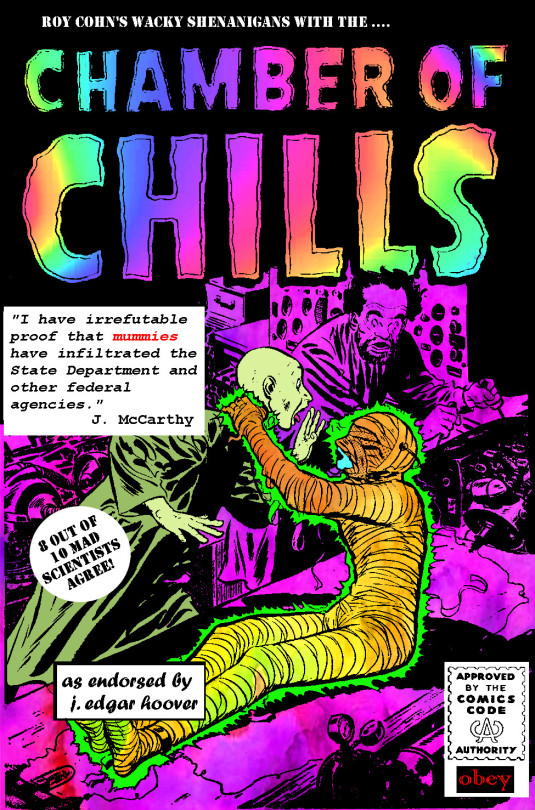
Roy Cohn's wacky shenanigans with the ...
Chamber of Chills
"I have irrefutable proof that mummies have infiltrated the State Department and other federal agencies." J. McCarthy
8 out of 10 Mad Scientists Agree!
as endorsed by J. Edgar Hoover
Obey the Comic Code Authority, puny Earthlings.
26 notes
·
View notes
Text
October 8, 2010: NPR Fresh Air revisits a 2000 interview with Jon Wiener about his book Gimme Some Truth: The John Lennon FBI Files [listen] [full transcript]
GROSS: Did you find anything in the FBI files that were released to you that indicated that the FBI went beyond surveillance - that they ever tried to set Lennon up?
Prof. WIENER: You know, there's like a couple of documents. Their concern was that Lennon would participate in some kind of concert, rally, anti-war demonstration outside the Republican National Convention. And there's a memo from J. Edgar Hoover to the head of the Miami FBI office that suggests that if Lennon could be arrested on possession of narcotics charges he would become more immediately deportable. Now this seems to me an effort to set Lennon up for a drug bust. The FBI doesnt enforce possession of narcotics charges, that's a state offense, this is not part of what the FBI is supposed to be doing. I then filed a Freedom of Information request with the Miami FBI office, asking for their files on Lennon, to see what their response to this was. They replied to me that their John Lennon file had been destroyed as a part of a routine file destruction procedure.
GROSS: Hmm.
Prof. WIENER: Now I have to note that - know that Lennon files were collected in five other cities and none of those places destroyed their Lennon file, so we wonder what was in the Miami Lennon file that was destroyed.
#john lennon#richard nixon#j edgar hoover#gimme some truth book#politics and the beatles#activism#audio#bug book list#mine#the bit about the miami file being destroyed coupled with the denial nondenial bit about the wiretapping is most interesting#john was paranoid but not by much the files show he was surveilled hes politically targeted and effectively it worked in shutting him up#the 1970s#1971#1972#1973#oh and that the files wrap up when hoover dies#but the problem persists for 2 years he's under an order to leave the country in 60 days and has to request extensions over and over#this is in addition to the apple legal stuff and the copyright cases#i think i need a courts and john tag no wonder why he was a pro by 76
9 notes
·
View notes
Text
In 1946, the very first X-File of the FBI was opened by J Edgar Hoover about a series of murders in and around the North West. The murders had the characteristics of both a wild animal and of being done by a man. Due to the bizarre and unsolved nature of the crimes, Hoover had the files locked away in the first X File (“Shapes” X Files, TV)

#nerds yearbook#sci fi tv#x files#xfiles#xphile#1946#chris carter#marilyn osborn#david nutter#lycanthrope#native american#fbi#j edgar hoover#david duchovny#fox mulder#agent fox mulder#gillian anderson#dana scully#agent dana scully#michael horse#werewolf#ty miller#donnelly rhodes#jimmy herman#renae morriseau#dwight mcfee#paul anthony mclean
9 notes
·
View notes
Text

#meyer lansky#j edgar hoover#charlie luciano#fulgencio batista#vito genovese#frank costello#benny siegel#whatsapp meme
7 notes
·
View notes
Photo

Courtesy of @kchasm: J. Edgar Hoover has a Ryu Number of 4.
103 notes
·
View notes
Text
#talkin#tik tok#fdr#jan 6th#january 6th#the business plot against fdr#franklin delano roosevelt#fbi#j edgar hoover
39 notes
·
View notes
Text

"He didn’t make sense to me,” said Hammer. “I didn’t get why Clyde stuck around and took Edgar’s hot-and-cold abuse. I didn’t understand the depth of their love and the complications of their relationship"
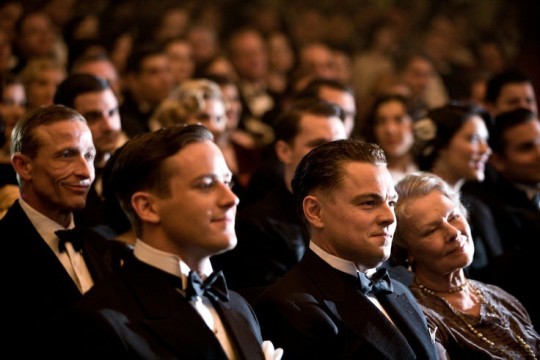
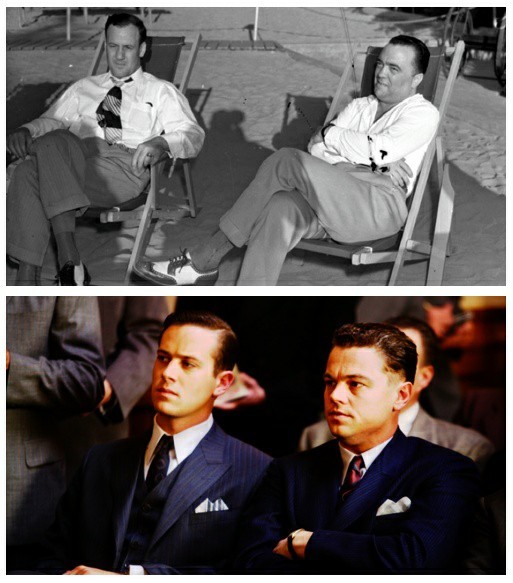

We didn’t even put things up on their feet,” Hammer recalled. “We just read through the script and discussed some scenes. Basically, we both came up with our characters and showed up to [the] set. We didn’t even have a discussion about how in love should these guys be or is there any connection. We didn’t address it, which I thought was appropriate because they didn’t address it. The characters would have never addressed it. It was always like, the elephant in the room. I think that worked out well.”
An article of 2 weeks ago 💙💙💙
105 notes
·
View notes
Text
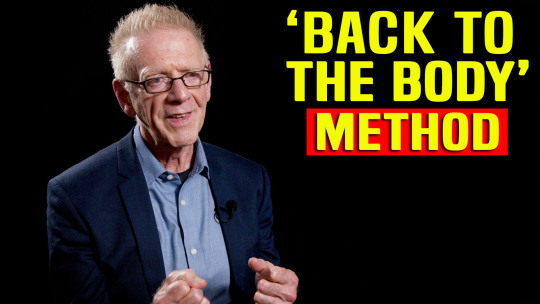
5 Steps To Script Analysis For Actors - Jean-Louis Rodrigue
Watch the video interview on Youtube here.
#writing#writers on tumblr#screenwriting#filmmakers on tumblr#cinema#filmmaking#movies#screenwriters on tumblr#script#film#character concept#character backstory#character background#actors#popee the performer#performance#performing art#j edgar hoover#i tonya#directing#behind the scenes#directors#theater tech#acting#alexander technique#movement#theatre#theater#musical theatre#musical theater
4 notes
·
View notes
Text
#uploads#videos#fred hampton#j edgar hoover#black panther party#black history#decade: 1960s#1960s#60s#bobby hutton#bob akavian
24 notes
·
View notes
Text
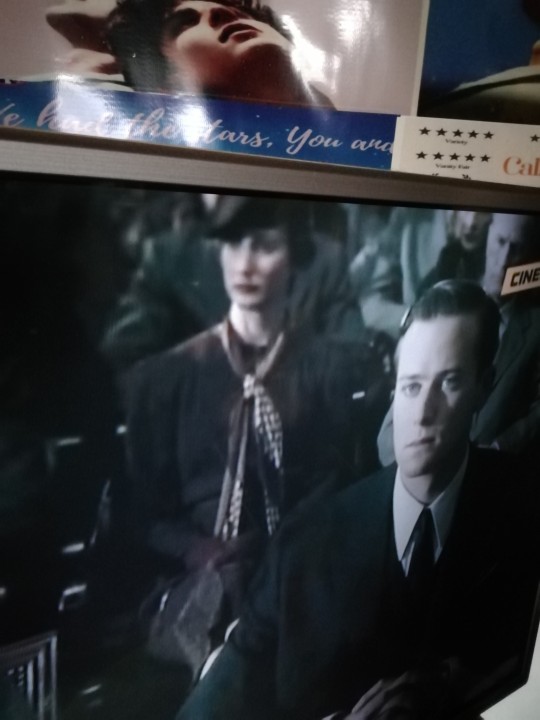
Ahora!!!! Por cinemax
7 notes
·
View notes

